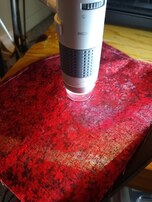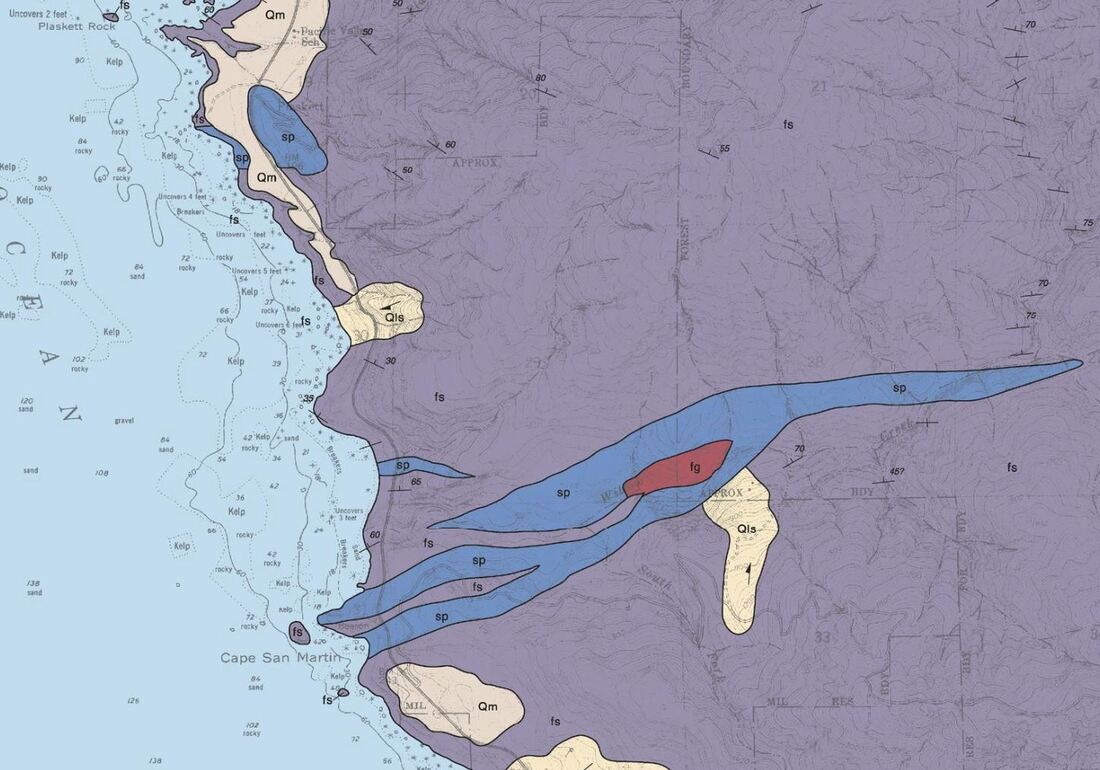|
(All punctuation in this post are double spaced for safety.) This design was taken from a Twitter post, a guy who's wife is a physician came up with the cotton mask design. Filter media is my idea. The store shelves are empty, no N95 masks to be found. How effective are cloth alternatives, and where might I find N95 equivalent fabric to make my own mask? Scroll down for the tutorial on how to make a mask or read on for more background info on air filters vs. viruses. N95 has become a household name. What does it mean? The "N" stands for "Not rated for oily particles", and NIOSH gives a 95% rating for arresting particulate aerosols. At the end of this post is a list of links that provide much more data from studies on this. What is N95 fabric made from? It's a non-woven polypropylene fabric made with specialized machines using a technology called melt blowing. The price has surged with the recent increase in demand. This link gives far more detail on N95 fabric vs. cotton for arresting particulate aerosols. Cotton and other common woven cloths--even when layered--are at best only 15-30% effective at blocking the virus particles. 3M makes a house air filter under the "Filtrete" brand that is composed entirely of non-woven polypropylene fabric. Varying grades are available, although the 2800 grade was harder to find, and not available in any stores that I found. I looked closely at two different air filters and an N95 mask under about 200X magnification. All three are made from melt blown polypropylene fabric. Who knew that a mat of tangled fishing line would be the thing that saves humanity? The Filtrete 1500 filter is a much looser weave than both the 2800 and the N95, daylight is visible through it. The 2800 filter looks almost as dense as the N95 at 200X magnification, but the fibers are laid in a more linear direction as opposed to the N95 which is very random and crossed over, probably providing better protection.  MERV Rating chart MERV Rating chart Know the enemyThe new coronavirus is about 0.00012 mm in diameter when floating around by itself. Attached to mucus particles, it is on a bigger particle and more likely to be arrested by filtration media. Surgical masks will capture about 62% of virus particles https://smartairfilters.com/en/blog/coronavirus-pollution-masks-n95-surgical-mask/. The mask design we're looking at may be as effective, using MERV 13 and higher filtration layers. The plan is to use MERV 13 or higher filtration media as a layer between two pieces of cotton fabric to make an effective mask. Cotton ribbon, (material like flat shoelaces) will be used to secure the mask around the back of the head. This design has not been tested in a lab. After doing some research over the fast expanding knowledge base of mask making, I think the following design is the best option because it includes:
instructionsOn to the materials. You'll need:
That's about it. Get your machine threaded up, and the rolling cutter and iron out. Construction Process: 1. On the long side of the 9" x 8" rectangle, center an 8" strip of HeatnBond about 1 1/4" from the top of the rectangle. Place the pipe cleaner or other metal nose bridge. Step 2: Roll the pipe cleaner up and tack the cloth to the exposed HeatnBond, hold iron on for 20 seconds for a good seam. This will be the front of the mask, the top of which will form to the bridge of the nose. Step 3: Fold over a long edge of the smaller 9" x 7" cloth, iron it flat and stitch a seam. This is just to keep things neat, it will be the pocket top and we don't want it to fray.  Step 4 Place the two faces against one another, seams up top. Depending where you put the seam and the HeatnBond, the two pieces may not match exactly up. Make adjustments as needed with your seam and HeatnBond location on the next mask. Now to make the pocket. We'll stitch around 3 sides of the piece, leaving gaps to allow our string to pass through later. Make the gap about 1/2". If it's too small, it will be really tough to get the string or lacing in later. Step 5 Turn it inside out, flatten the sides with your hand or an iron. Stitch the channels, one on either side. Again, leave room for the ribbon to poke through. Step 6 Tie off both ends of the cotton lacing/ribbon, and use something pointy like a skewer to push the knots through either side. That's it. Let's all keep working together to get through these tough times. Feedback is generally appreciated. I think there's room for improvement with the nose wire, maybe using something stronger than a pipe cleaner. Also may start using cordage with a friction toggle so it doesn't have to be tied. filter materialThe pocket in these masks can accommodate many types of filtration media. Here I'll focus on adapting household air filters as reusable inserts in these masks. The pocket size on these masks ends up being about 5 1/2" x 6 1/2". I'll be cutting one sheet of filter media and folding it in half to make an insert. First we need to get the filter paper out of the box it's packaged in. This takes some technique as there is glue along the sides, and the wire mesh can poke your fingers. Best method I have found is to rip out the cardboard along the outside of the frame, which allows for easier access to the mesh. Tear it piece by piece until all that remains is the paper accordion. Now just cut out a 5 1/2" x 13" rectangle and fold it in half to make an insert.
2 Comments
While not the primary attraction for most visitors to California's Big Sur area, deposits of green nephrite jade have a special draw for adventurous rock hounds, divers, and casual beach-goers. There is much confusion surrounding jade and how to identify it. There are several types of jade, and other green stones that look and feel just like jade when wet. In Big Sur, we're dealing with nephrite jade and serpentinite, a green stone that many beginners mistake for nephrite jade. originsThere are two types of gemstone grade jade: jadeite and nephrite. The main physical difference is that jadeite is composed of interlocking granules, while nephrite is composed of interlocking fibers. Japanese artisans discovered long ago the difference in the two types of jade, but Western culture did not document the difference until the late 1800s. This is why both forms are known today by the one word, jade. Jadeite is more rare, and includes famous types of jade such as Imperial Jade known well to some Eastern cultures. All jade is formed under similar conditions, from near-surface to 50 km underground with up to 20 atmospheres of pressure, and temperatures ranging from 200-500 degrees C. It is found primarily in areas where tectonic plates meet, specifically oceanic plates. Superheated, serpentite-infused liquid penetrates silicon-bearing rock under high pressure and the crystalline deposition process that makes nephrite and jadeite begins. The addition of chromium 3 gives the green color. It's younger and softer than the surrounding rock, so it requires unique conditions to make it up to the surface without being crushed into dust over millions of years. Often found surrounded by serpentinite and serpentine deposits, no coincidence then that we find a large serpentine vein protruding out into the water below Jade Cove in Big Sur. Jade Cove itself is the "SP" labeled area at the top of the image below, which is another serpentine deposit finding itIf you really want to find significant amounts of jade, SCUBA diving is the way to go. This blog post does not go into detail for the divers as others do. For those who don't have SCUBA gear or certification, the following should help you a bit. Nephrite jade is tough to find on the beach these days. The old timers say that back in the 60's, a collector would have so much extra material that only the best nephrite would be taken back up the trail. Since then, smart dirty hippies have been pulling up 400 lb. boulders of jade and floating them onshore. Today, the jade-bearing beaches are constantly sifted for new material and only the most patient collectors will succeed. The surf can be brutal and the cove is only accessible on the calmest days. The trail itself can be a barrier for access to many. The main path down to the collection area had a washout in the rainy season of 2018 and while there is currently a loosely-secured rope over the bad part of trail, adventurers should have good shoes on and be ready for a bit of class four terrain as you approach the bottom of the trail. This is a sketchy place to explore alone because of the fall and water risks. On a nice day there will be a few other people there, but in bad weather you'll be alone. No cell-signal, but the nearest help is close at the fire station at Plaskett Creek, just to the North of the campground nearby. If you are able to make the long drive, find the trail head and negotiate the washed-out trail on a day with good weather and small waves, then you have a tiny chance of finding some nephrite jade. If you have any money at all and want to leave the area with some jade, check out the booth at Ripplewood, our friends: https://www.davidscoastalcollections.com/ . Also check out my attached shop with Big Sur jade jewelry.
If you are determined to find your own, get into SCUBA and read the blogs with info on that. If you are super patient and just want to sift pebbles for a few hours, then grab a small rake and get to it. On a good day you'll find a few pebbles of jade. Between the day-sifters and the SCUBA pros, there are the semi-dedicated and equipped adventurers like myself. With a wetsuit and booties, I've found some nice pebble sized pieces while rummaging around in the creases between boulders in waist-deep water. This is dangerous stuff and you should have a partner. Waves sneak up and will smash your head against a boulder. Free-divers frequent the location and some are able to find decent amounts of nephrite. Jade has been found all along a 3 mile region of coastline around jade cove, so maybe try another beach and you might have luck if the first one doesn't pan out. Any questions, post a reply below. |
AuthorTinkering, exploring. ArchivesCategories |









































 RSS Feed
RSS Feed
